Must-Try Italian Cuisine
Italy is built on recipes, not rules. From risotto to ragù, pizza to pesto — these are the dishes every Italian swears by, and every traveler should try.
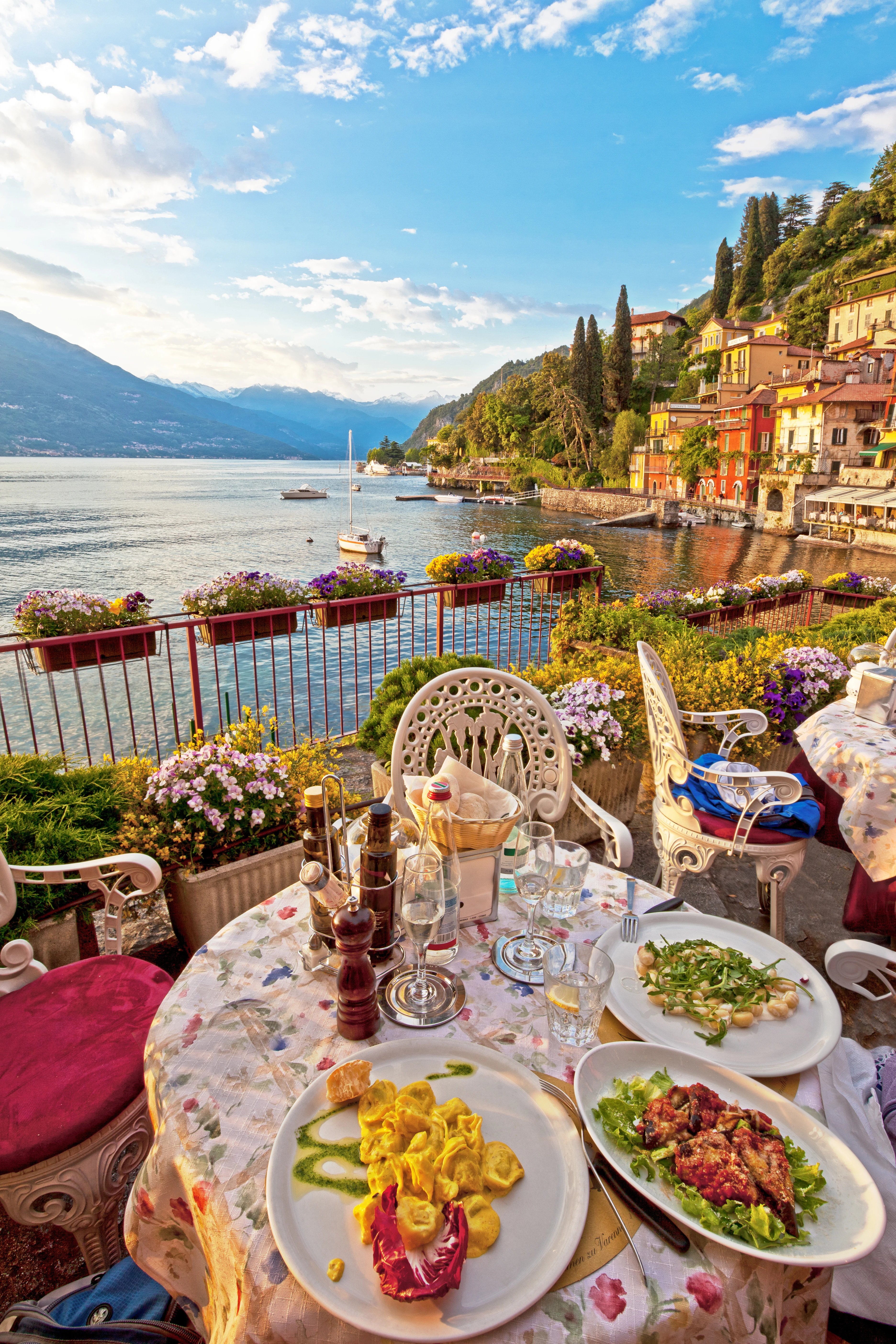
Few places in the world take food as seriously — or as joyfully — as Italy.
Here, cuisine isn’t just nourishment. It’s history, geography, identity, and art served on a plate — and if you’re cycling through Italy, it’s the most rewarding way to refuel.
More than just a Pizza and Pasta Place
Italy is often called “la terra del buon cibo” — the land of good food — and for good reason:
- Italians spend more than 2 hours a day eating (one of the highest rates in Europe)
- Over 5,000 traditional regional products
- 24 UNESCO-recognized food traditions
- 400+ known pasta shapes
- 1,000+ varieties of cheese
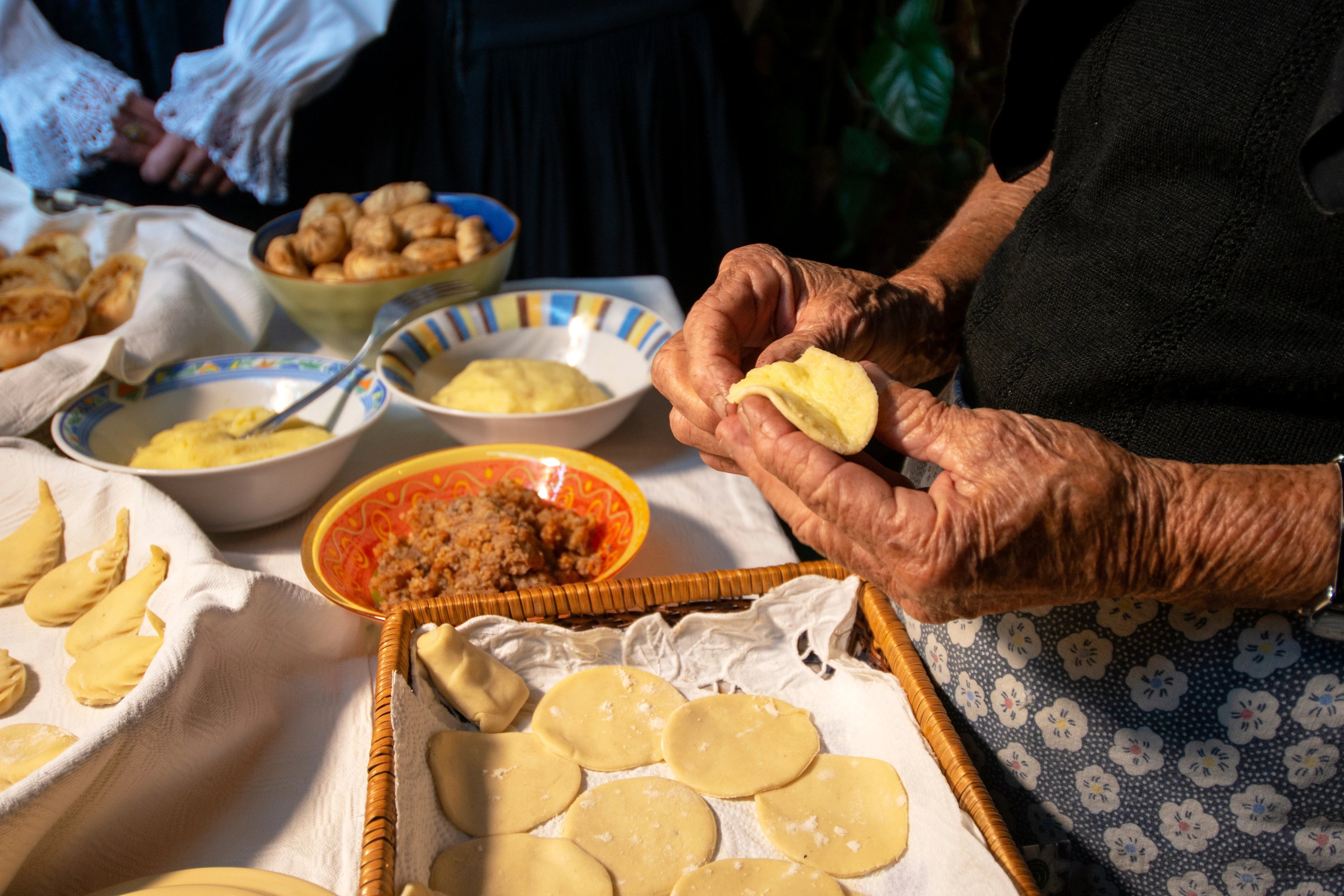
Meals are a ritual — eaten slowly, with conversation, wine, and laughter.
Breakfast (colazione) is simple — usually just coffee and a pastry. Lunch (pranzo) and dinner (cena) are the social centerpieces of the day.
There isn’t one “Italian cuisine.”
There are 20 regional cuisines, each shaped by climate, history, and local ingredients. Below you’ll find the list of our absolute favorite ones. Buon appetito!
Must-try Dishes by region:
Dolomites and the Mountains
(Trentino–Alto Adige, Valle d’Aosta, Abruzzo, Molise)
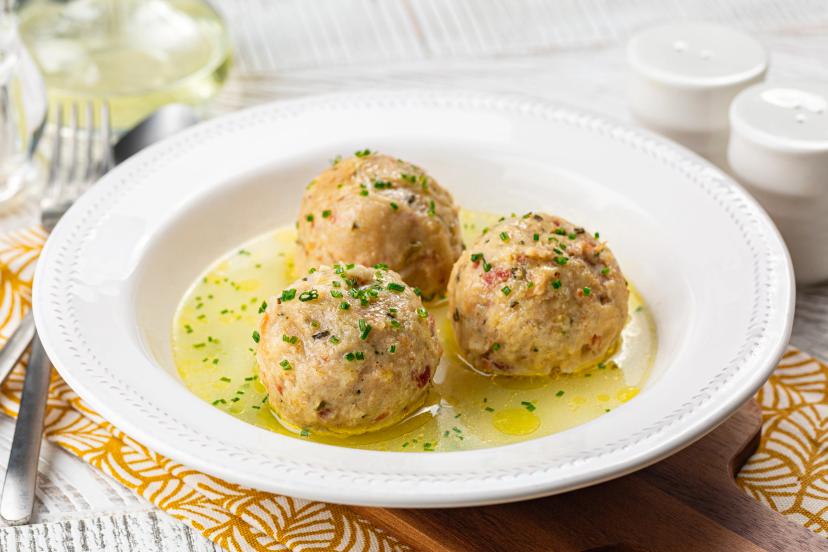
Canederli
In the high valleys of the Dolomites, bread never goes to waste. Canederli are hearty dumplings made from stale bread, milk, eggs, and speck, simmered in broth or butter. This humble Alpine dish dates back to the Middle Ages, when mountain shepherds cooked with whatever they had on hand. Today, it’s comfort food after a long day of hiking or cycling among the peaks.
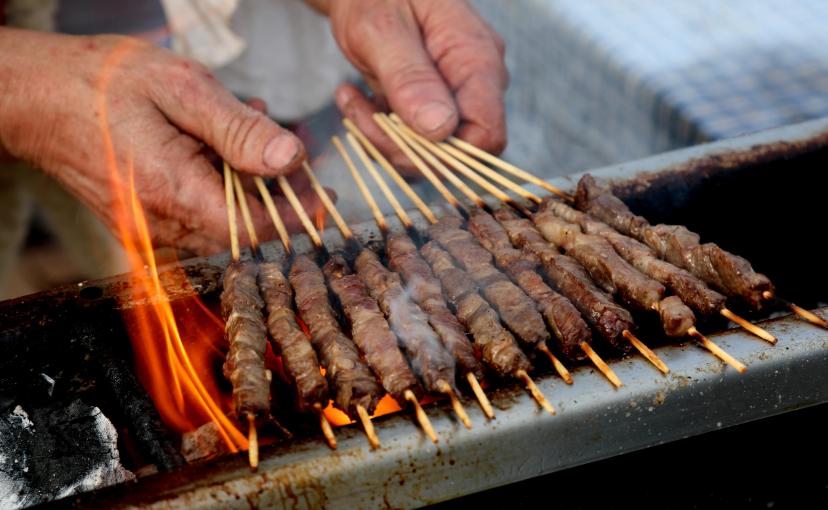
Arrosticini
Further south in Abruzzo’s Apennines, shepherds created these charcoal-grilled mutton skewers. Eaten hot off the grill and often in dozens, they’re now a symbol of Abruzzo’s rustic cuisine. The best are cooked on long, narrow grills called furnacelle — a design unchanged for generations.
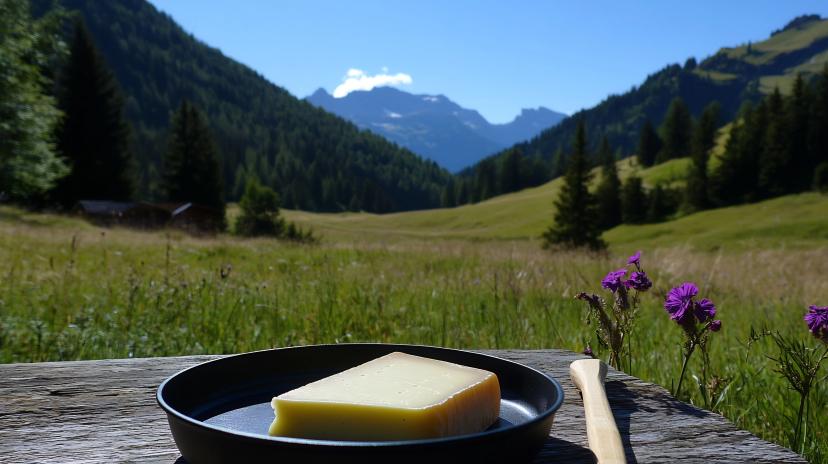
Fonduta Valdostana
In the far north, Valle d’Aosta warms winter nights with this creamy fondue made from Fontina cheese, milk, and egg yolks. Fontina is one of Italy’s oldest cheeses — produced since the 12th century and aged in mountain caves for its nutty sweetness. Served with bread cubes or potatoes, it’s the flavor of Alpine hospitality.

Cavatelli con Sugo di Maiale
A mountain staple from Molise, these small hand-shaped pasta shells are served with a slow-cooked pork ragù that can simmer up to six hours. Once reserved for festivals, it remains a cherished Sunday dish. Molise locals still roll the pasta by pressing their thumbs into each piece of dough — a gesture passed down from grandmother to granddaughter.
Lake Garda and Lake Como
(Lombardy, Trentino, Veneto)

Risotto alla Milanese
In the refined cities around the lakes, you’ll find this golden-hued risotto flavored with saffron and butter. According to legend, it was invented by a Milanese glassmaker in 1574 who accidentally dropped saffron into rice during a wedding feast. Its brilliant color and delicate aroma make it one of Italy’s most elegant comfort dishes.

Missoltini del Lago di Como
A true local specialty, these are lake shad fish dried and pressed with salt, then grilled and served with polenta. The method dates back centuries to preserve the catch before refrigeration. Though less famous than pizza or pasta, missoltini embody the resourcefulness and tradition of Northern Italy’s lake communities.

Polenta Taragna
A rustic dish from the mountains around Bergamo and Lake Iseo, this polenta combines cornmeal and buckwheat flour, enriched with butter and melted cheese. Once a staple of peasant life, it’s now a beloved winter comfort food found in mountain lodges and lakeside trattorias.
Veneto
(Venice, Verona, Padua)
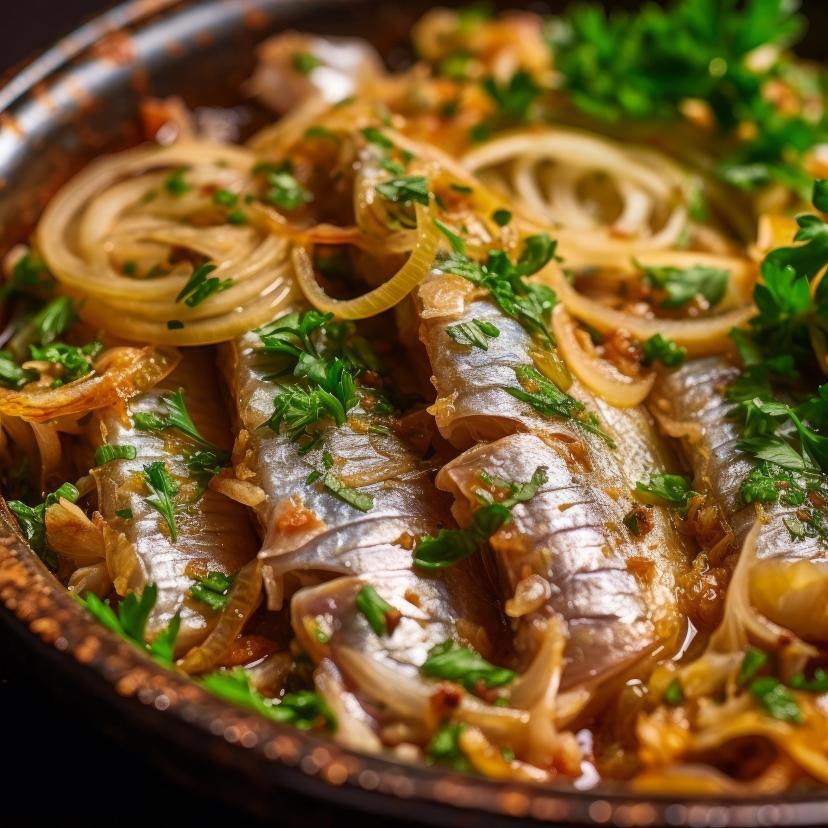
Sarde in Saor
A classic Venetian antipasto of fried sardines marinated with onions, vinegar, raisins, and pine nuts. It originated in the 14th century when sailors used the sweet-and-sour mixture to preserve fish during long sea voyages. The flavors — tangy, sweet, and savory — reflect Venice’s history as a crossroads between East and West.

Risotto al Nero di Seppia
Venice’s iconic black risotto owes its color to cuttlefish ink, once used by fishermen to avoid wasting any part of the catch. The ink adds a rich umami flavor and dramatic appearance. Locals pair it with a glass of crisp Soave wine and claim it tastes even better on foggy days by the lagoon.
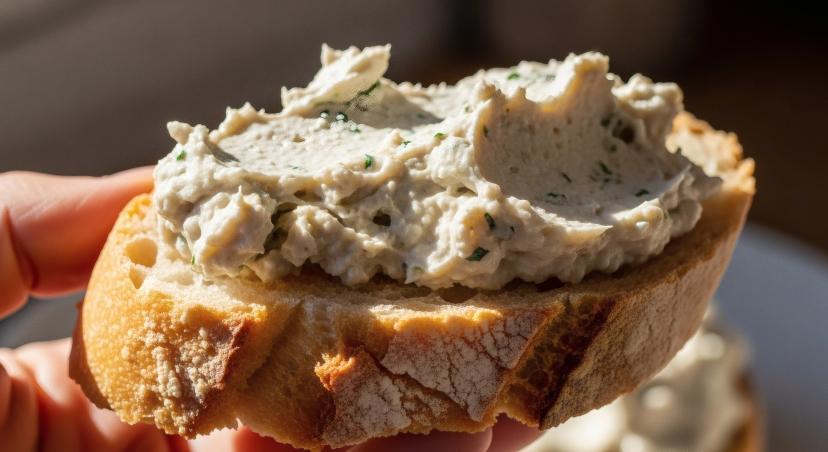
Baccalà Mantecato
Venetians have turned preserved cod into an art form. This whipped cod spread — creamy yet light — is served on polenta or crostini. The fish itself comes from Norway, imported by Venetian traders since the 15th century, a reminder of the Republic’s vast maritime network.
Tuscany
(Florence, Siena, Chianti, and the countryside)
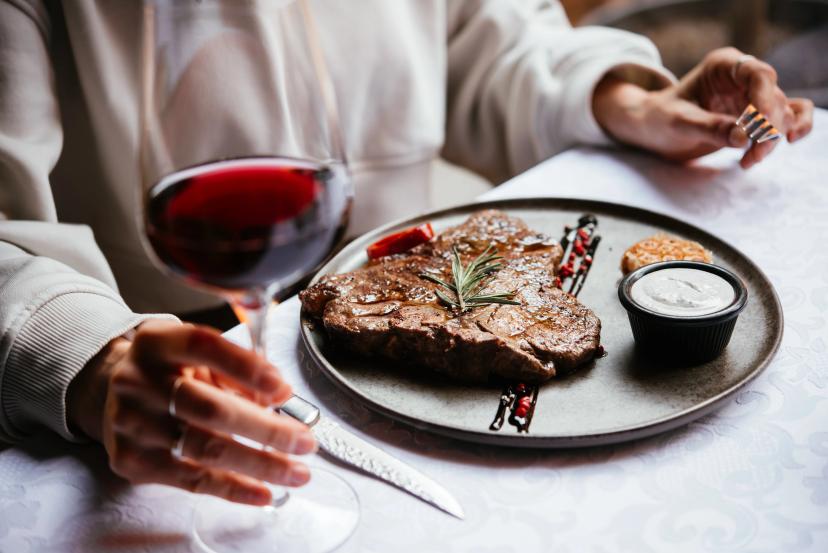
Bistecca alla Fiorentina
Tuscany’s king of meats: a thick-cut T-bone steak from Chianina cattle, grilled over olive wood coals and seasoned only with salt and oil. It must be served rare — anything else is heresy. The dish dates back to Renaissance Florence, where English merchants inspired the name “beef steak.”
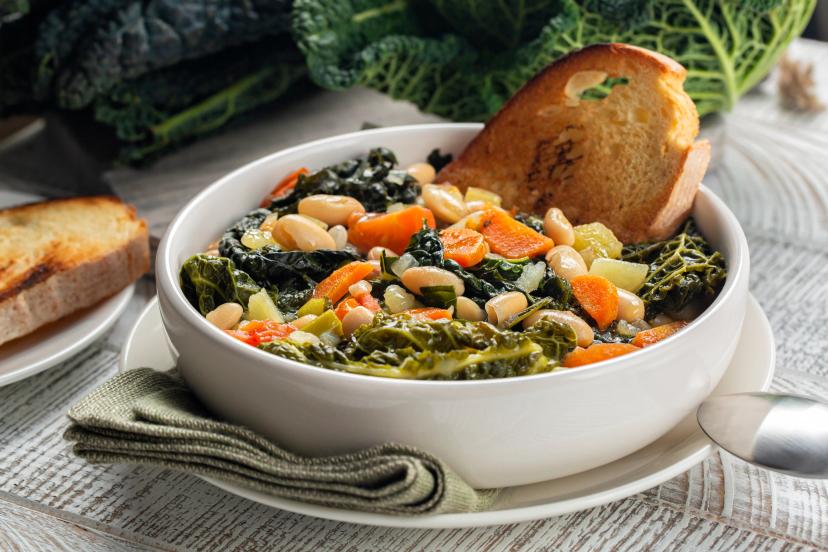
Ribollita
The ultimate expression of cucina povera (poor cooking). Made from beans, kale, and stale bread, this thick soup was originally reheated each day — hence “reboiled.” Modern chefs now treat Ribollita as a symbol of Tuscan simplicity and sustainability.

Pici all’Aglione
A lesser-known but beloved pasta from the Val d’Orcia. The thick hand-rolled noodles are tossed with tomato and Aglione — a large, mild garlic grown only in Tuscany. Farmers have cultivated it since Etruscan times, and it’s now a protected local ingredient.
Piedmont
(Turin, Alba, Langhe Hills)

Vitello Tonnato
Delicate veal slices draped in a creamy sauce of tuna, anchovies, and capers. Invented in the 18th century, it unites land and sea — a signature of Piedmont’s aristocratic cuisine. It’s still served chilled at summer feasts and wine tastings across the Langhe.
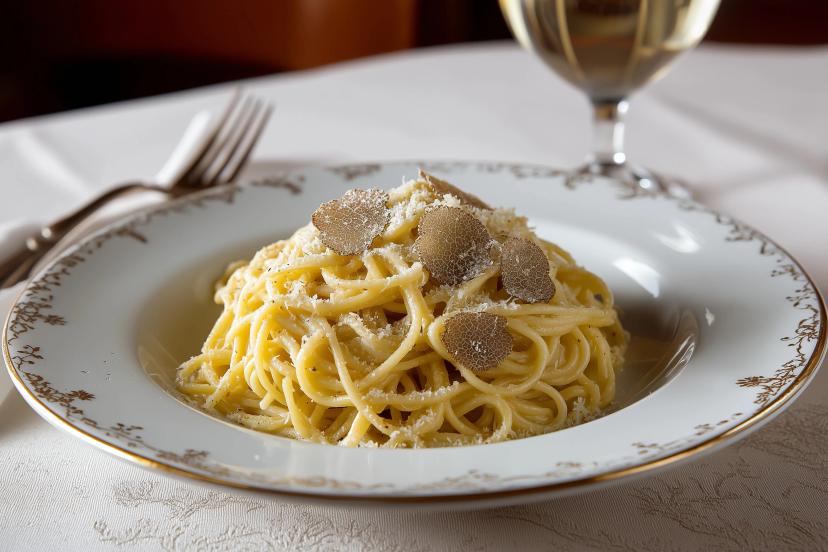
Tajarin al Tartufo
Golden pasta made with dozens of egg yolks and topped with shavings of Alba’s white truffle. Piedmont is the truffle capital of Italy, and during autumn, its markets fill with hunters carrying their prized finds in baskets. The annual Alba Truffle Fair attracts visitors from around the world.
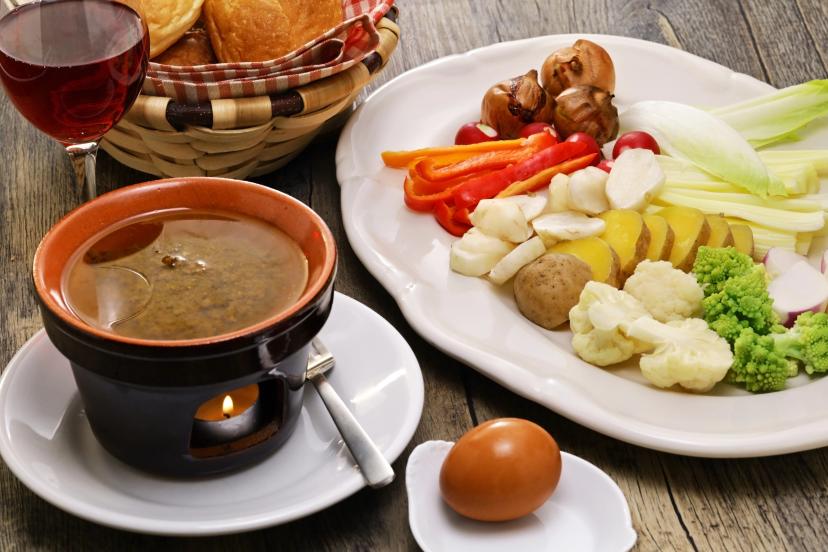
Bagna Cauda
A warm dip of anchovies, garlic, and olive oil, eaten with raw or cooked vegetables. It dates back to the 16th century as a harvest meal for vineyard workers. Today it’s a social ritual — friends gather around the pot, dipping and sipping Barbera wine deep into the night.
Puglia
(Apulia – Bari, Lecce, Alberobello)

Orecchiette con Cime di Rapa
The most iconic Puglian dish — “little ear” pasta tossed with turnip greens, anchovies, and chili flakes. The shape is hand-pressed by local women in Bari’s old town, who make and sell it from their doorsteps. Puglia grows more durum wheat than any other Italian region, giving its pasta its firm, golden texture.
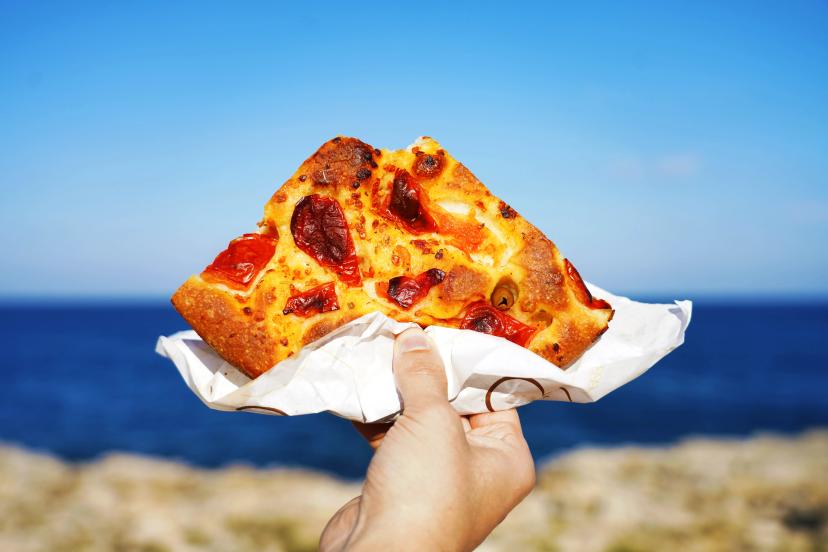
Focaccia Barese
A round, thick focaccia topped with cherry tomatoes, olives, and oregano. Bakers add mashed potatoes to the dough for extra softness — a secret discovered generations ago. It’s eaten any time of day, often with cold beer at sunset by the Adriatic coast.
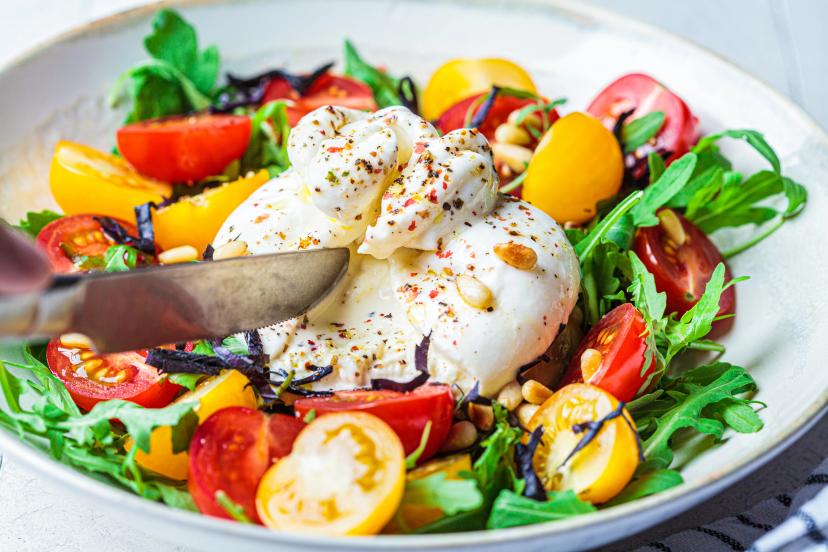
Burrata
Born in the town of Andria in the 1920s, Burrata was originally made to use leftover mozzarella scraps mixed with cream. The result: Italy’s creamiest cheese, now exported worldwide. When cut open, it spills its rich, buttery center — best enjoyed within 24 hours of being made.
Sicily and Sardinia
(The Islands of the South)
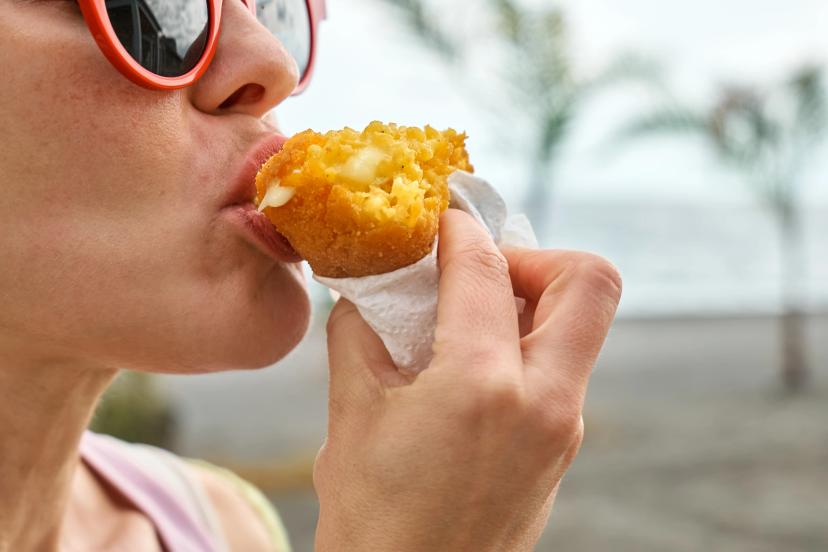
Arancini
Sicily’s most famous street food — golden, fried rice balls stuffed with ragù, cheese, or peas. Their origin dates to Arab rule in the 10th century, when rice was first cultivated on the island. Palermo and Catania still argue whether the plural is arancine or arancini, but both agree they’re irresistible.
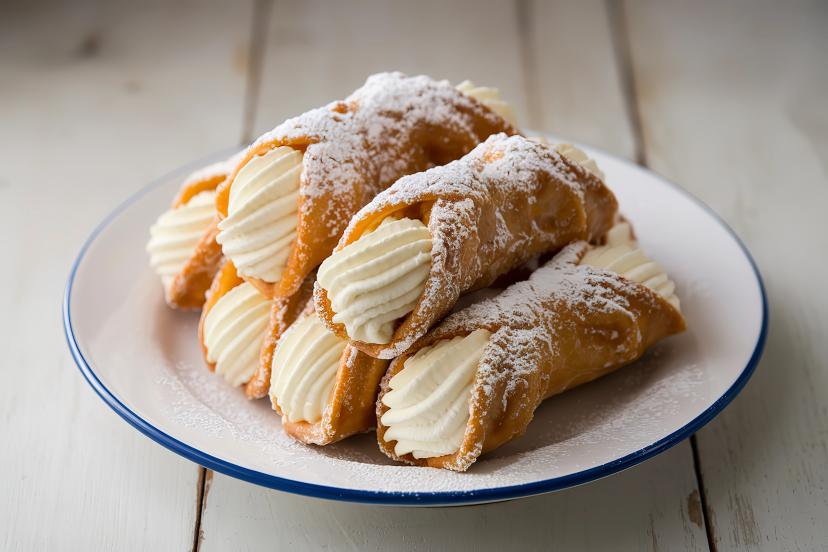
Cannoli
Crispy pastry tubes filled with sweet ricotta cream and candied fruit. Once made by nuns during Carnival, they now represent Sicilian joy and hospitality. Authentic cannoli use sheep ’s-milk ricotta and dough flavored with Marsala wine.
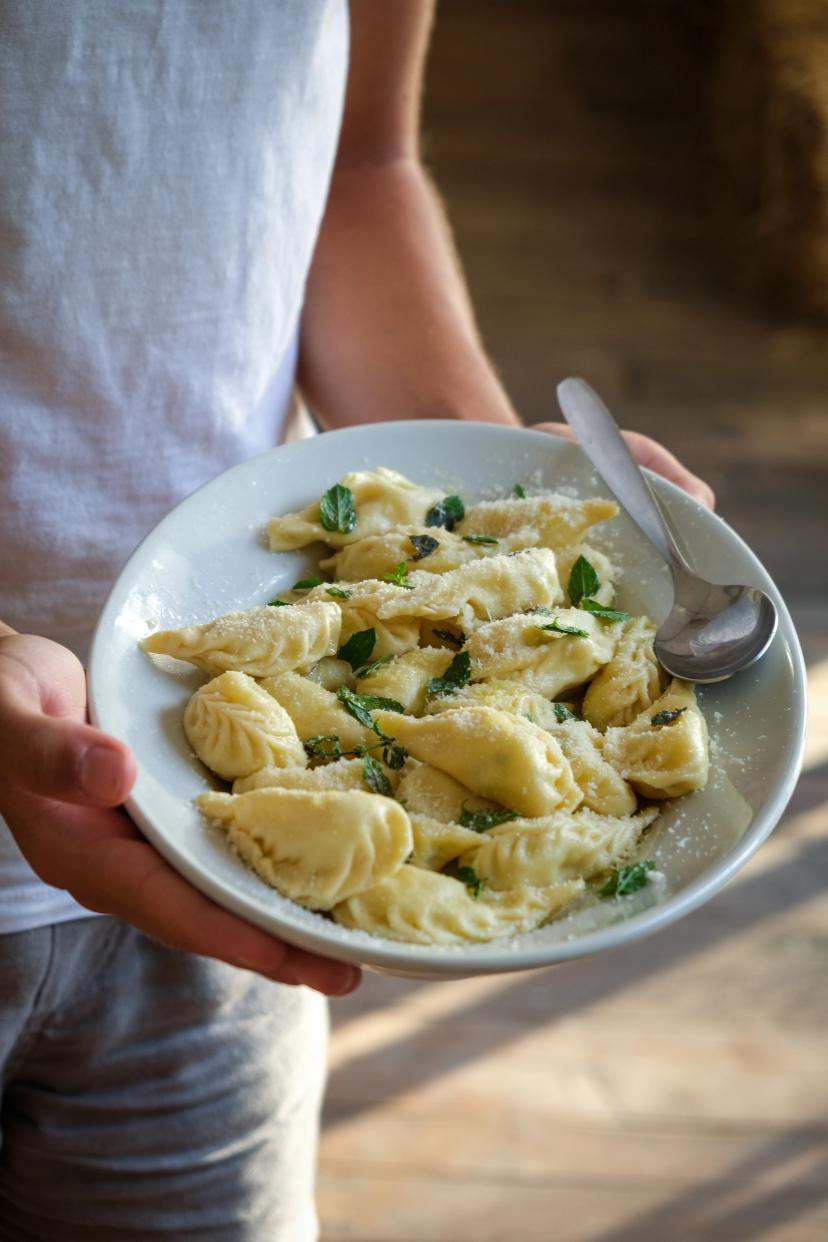
Culurgiones
Artful ravioli stuffed with potato, pecorino, and mint, sealed with a decorative wheat-ear braid called spighitta. Each village has its own pattern. In 2015, Culurgiones d’Ogliastra gained IGP status for preserving this intricate Sardinian craft.
Italian Drinks & Rituals
And where there’s food, there’s always something to drink. Italy’s beverages are as regional and distinctive as its dishes:
- Coffee: a morning espresso or afternoon macchiato — short, strong, and best enjoyed standing at the bar.
- Aperitivo: the ritual pre-dinner drink — a Spritz in Veneto, a Negroni in Florence, or a glass of Prosecco overlooking the piazza.
- Wine:
- Tuscany – bold Chianti and Brunello di Montalcino from the sun-kissed hills.
- Piedmont – elegant Barolo and Barbaresco from the Langhe vineyards.
- Puglia – rich, fruity Primitivo from the heel of Italy’s boot.
- Sicily – vibrant Nero d’Avola from volcanic soils.
- Digestivi: to end the meal, a shot of grappa in the north, amaro in the heartland, or limoncello along the Amalfi Coast.
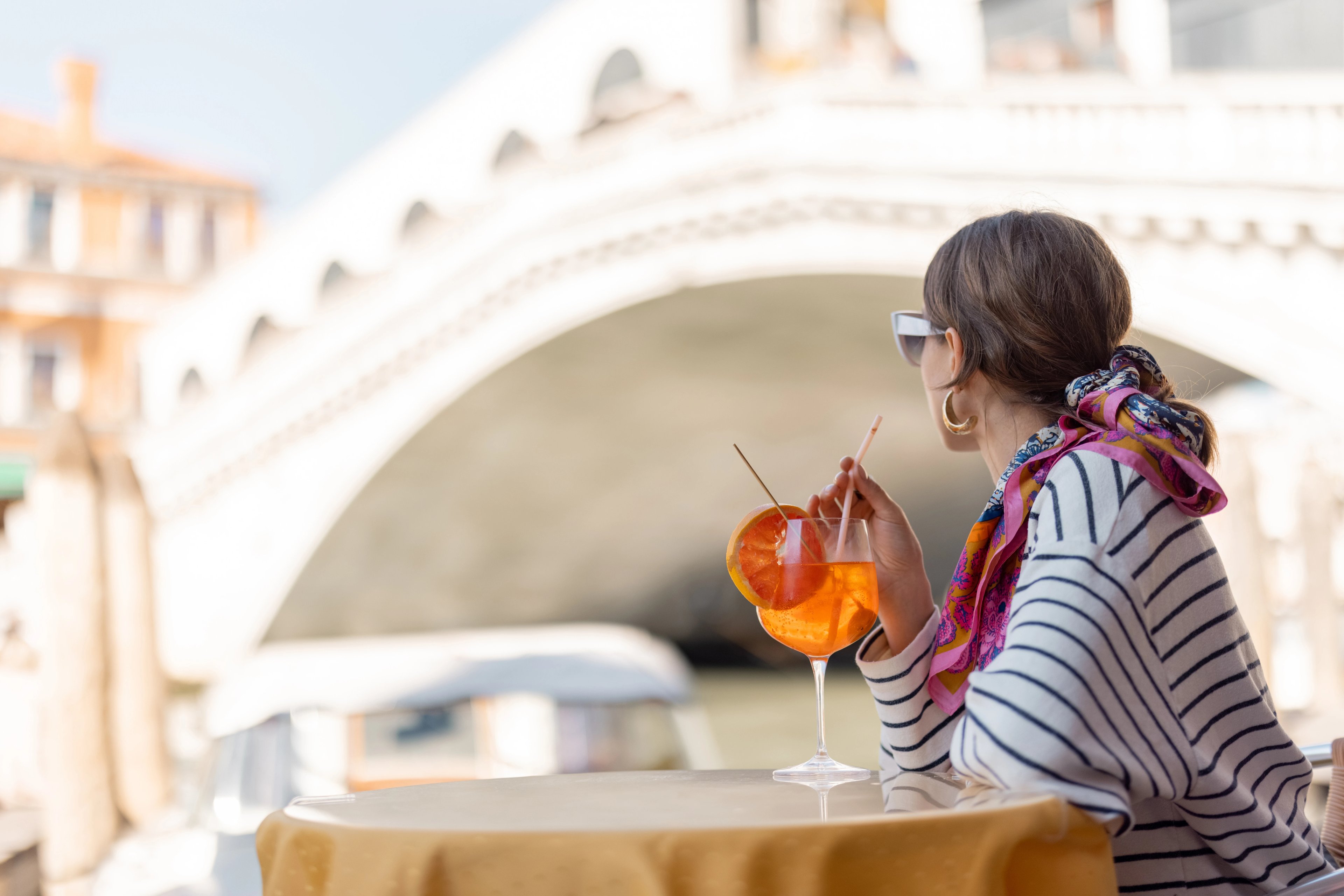
Food is Italy’s True Language
Cycling in Italy isn’t just about landscapes — it’s about what you taste along the way. Every stop at a market, winery, or trattoria opens a window into local life.
Ride through Italy’s flavors with our epic self-guided cycling tours.

Hassle-Free
We handle itineraries, accommodations, and anything else you prefer not to deal with, so you can enjoy a carefree holiday.

Completely Customizable
Flexibility is our middle name — whether you want more or less, or just beyond ordinary, we’ll make it happen.

Book with confidence
We are a financially protected company, fully bonded and insured, keeping your money safe and allowing you to travel with confidence.

Unbeatable support
Our 24/7 customer support is where we show our passion, bringing you a better experience by making your well-being our number one priority.






.jpg&w=3840&q=75)
